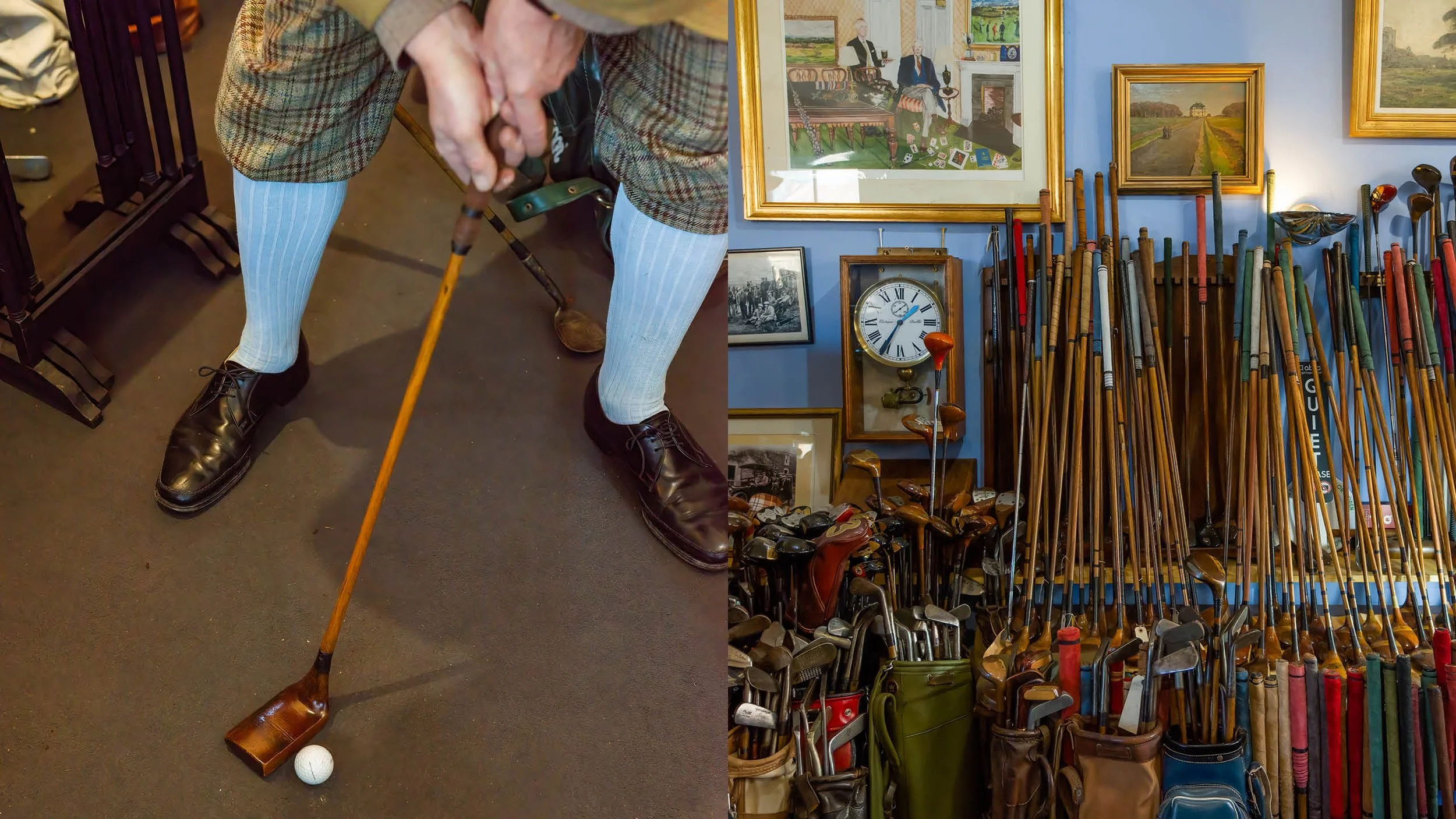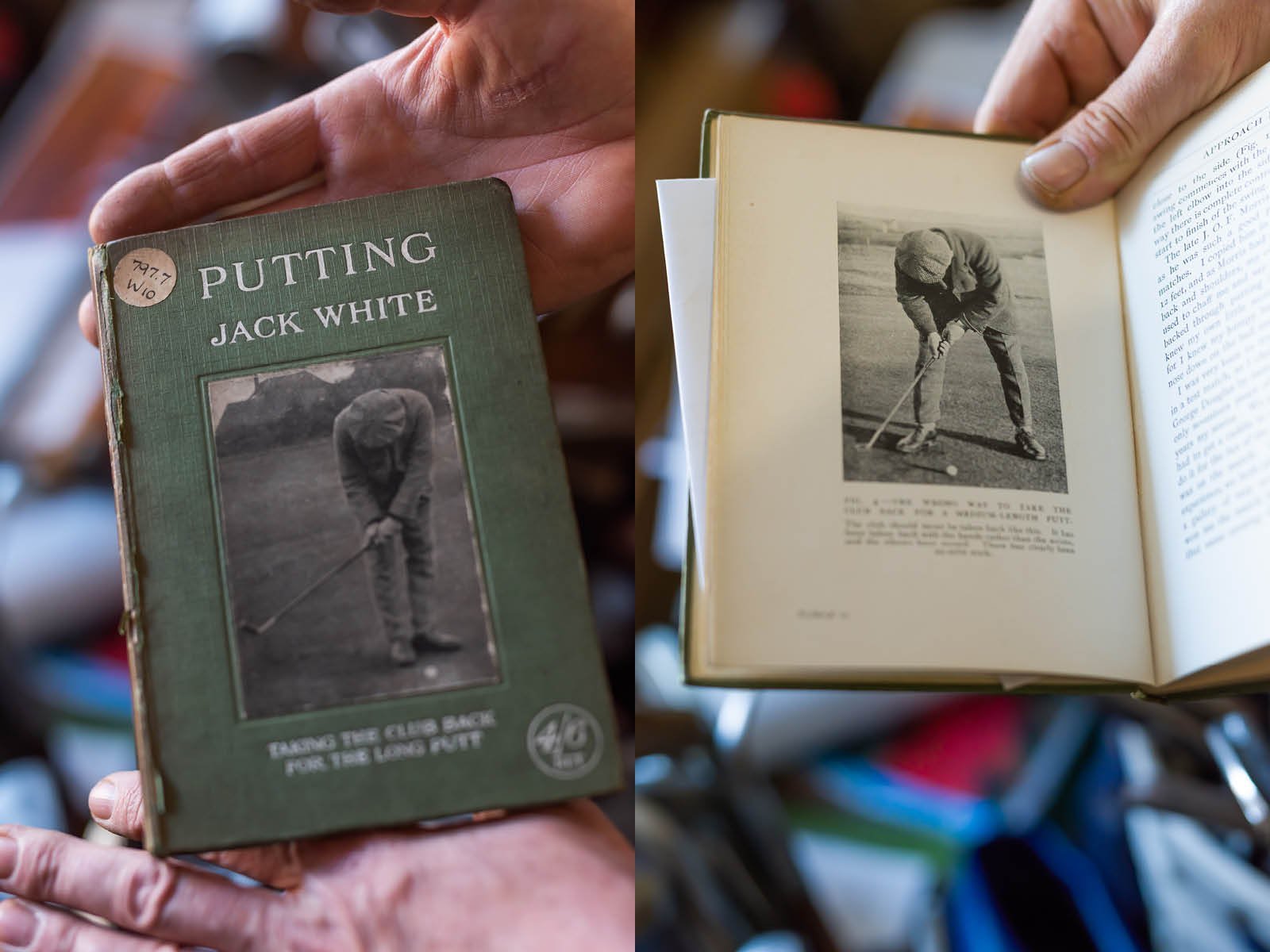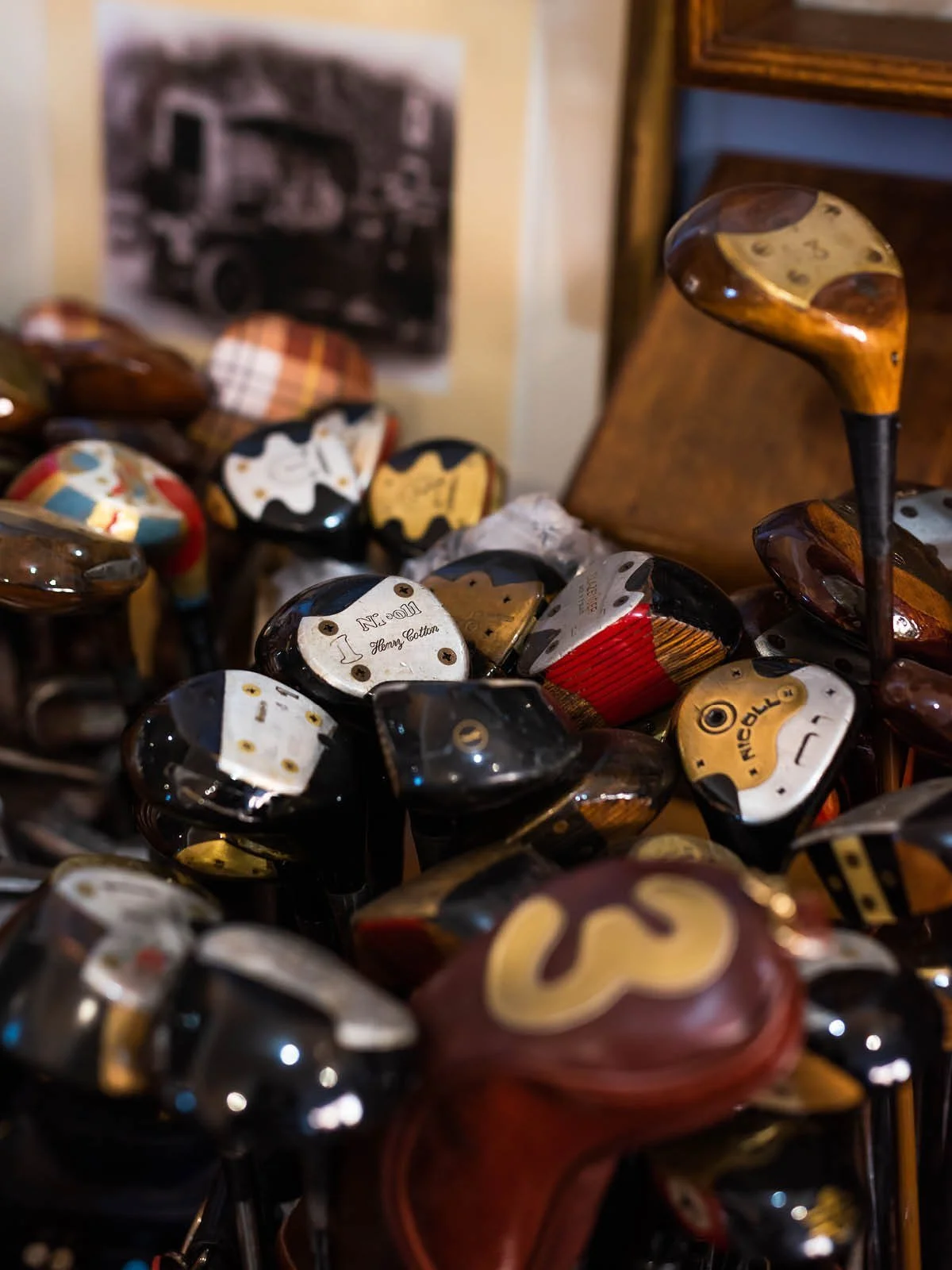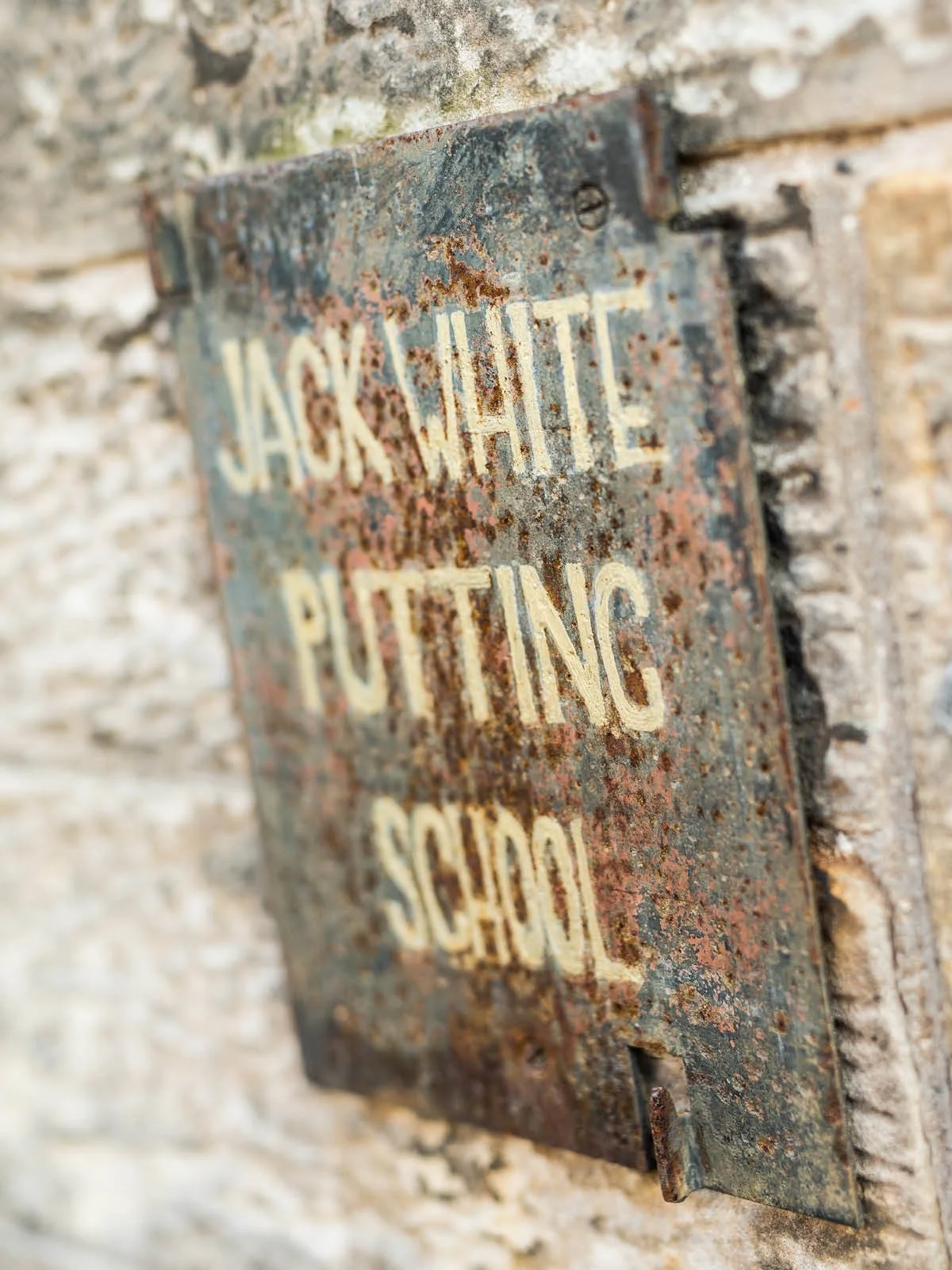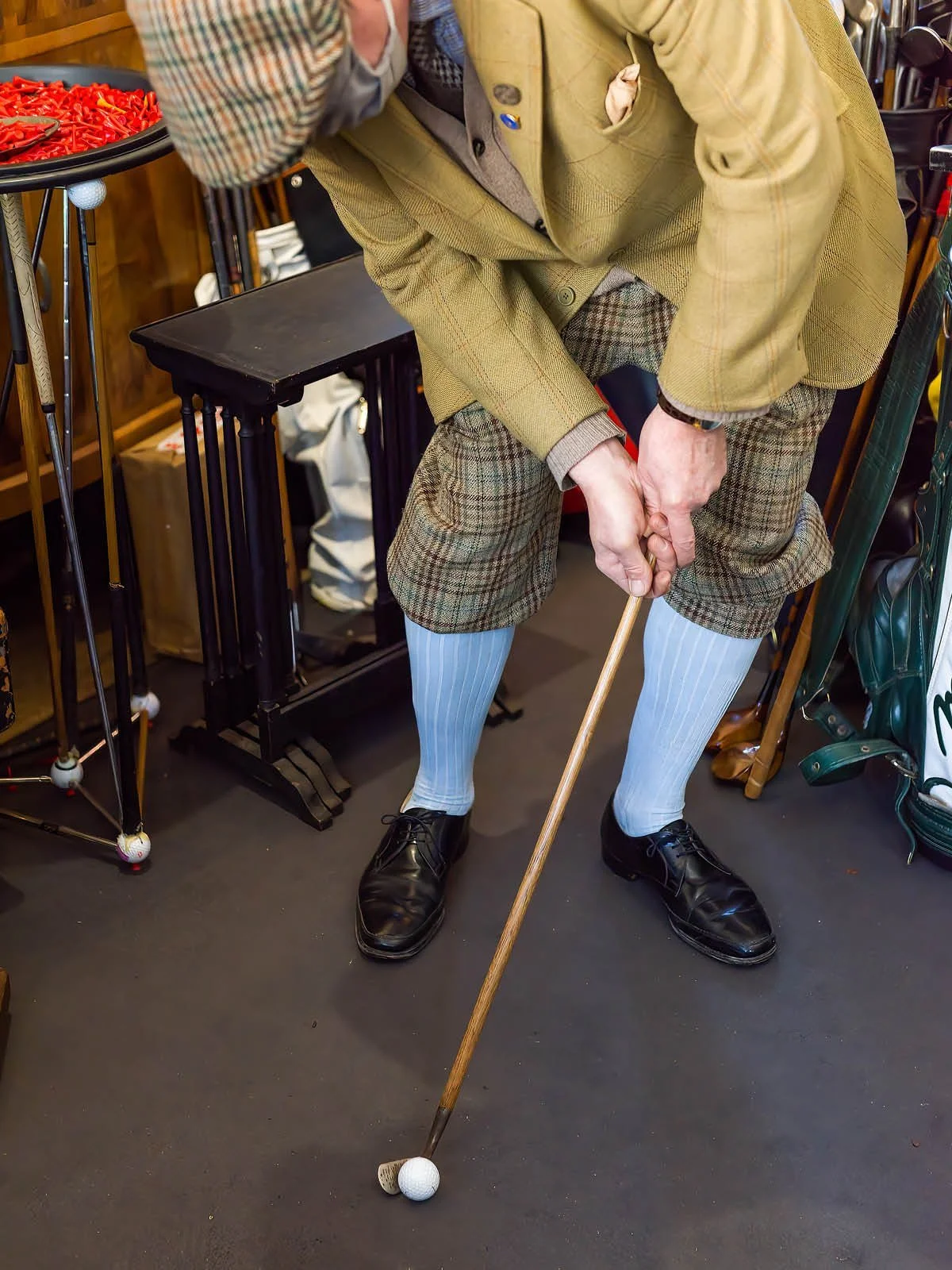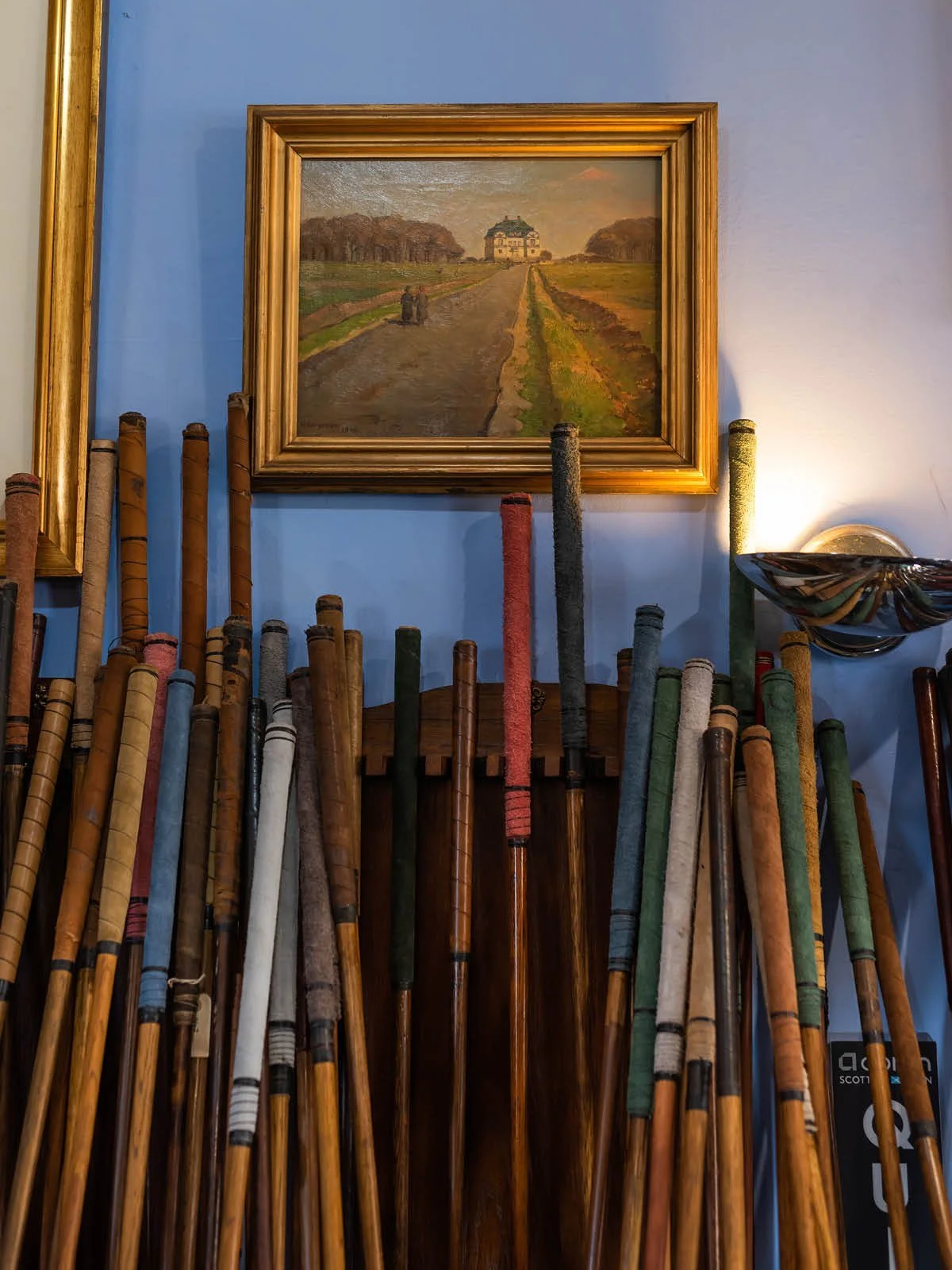The hickory shop every golfer should visit
In East Lothian, south of the Firth of Forth, east of Edinburgh, you’ll find a land rich in golf history, and here resides your new favourite store, the Jack White shop, a home of hickory. Neil Davey heads to Scotland to meet its founder, Boris Lietzow.
For a region so modest in size, there’s serious golfing depth to East Lothian, not just in the volume of courses – 22 – but also the age. Any links younger than 150 years is practically a whippersnapper when standing in the iconic shadows cast by the likes of Musselburgh, where golf was played as far back as 1672; Muirfield with origins in the 1700s; and Gullane, where people are thought to have been battling the elements, with only a club for protection, for more than 350 years. It’s a land where the golfing links landscape has changed seemingly little, except for perhaps what’s in the hands of those choosing to take it on.
For centuries before iron came to the fore [or forge], their weapon of choice would have been wood, which makes the location of the Jack White shop, at Gullane Golf Club, so fitting.
Gullane, with its three courses [two designed by the famed Willie Park Jr], is plenty reason enough to visit this corner of the Firth of Forth, but in this tardis-like shop is a history that stretches back through the golfing age.
Named after the only East Lothian golfer – to date – to win the Open Championship, the Jack White shop is home to a putting school (White was a renowned putter of the ball) but its main business – keeping hickory golf alive – is evident the second you walk in. Not that you can, necessarily, because it’s by appointment only. “It’s a small shop,” explains Boris. “We can only cope with two customers...”
He’s not kidding. It’s a very small space and it’s packed to the rafters. As Boris gleefully shows off the myriad remarkable things the shop contains, you can’t help but wonder how he fits all of those in, let alone a desk and the workbench where he renovates hickory clubs. Boris goes about his work suitably dressed: in plus fours, Tweed and a very large, traditional hat serve several purposes, however. “It is an image,” admits Boris, who also doesn’t show his face in photographs. “That’s my ‘Ted Baker’ strategy in case I sell up,” he tells me, explaining that store’s fictitious frontperson and how the Jack White shop is thus connected to classic golf apparel and not Boris’s face. “Also,” he adds with a sly grin, “it’s practical, and I’m always ready for a game.”
Boris discovered the joys of hickory golf around 12 years ago, having become a little frustrated with ‘regular’ golf. “There’s not much variety in the modern game,” he says and gestures to one of many stacks of hickory golf clubs within his reach. “These are much more fun.
“In 2010, I played in the World Hickory Open Championship, and playing with all these crazy people, with old clubs, and I thought ‘wow, this can’t get any better!’. It’s very sociable, it’s about camaraderie and art. We have this booklet, a list of players, addresses, phone numbers. If I travel to, say, Hoylake, I can call a guy, and get a game and he’ll know he has one here. And if he’s not around, his pal will be. Or you meet people at tournaments. The last one was at West Sussex, Goodwood, which was very cool, because of the race.
“It was a big field,” continues Boris, “eighty players, and more fun-oriented than some, with a gin bar on the tee. It’s a lifestyle in the end. The outfit is normal, every day; in a decent match, nobody shows up in normal gear, it just doesn’t suit it. In Rye, at the English Championship, there’s a two-shot penalty if you don’t have a jacket.”
Beyond the lifestyle, it’s the challenge that attracted Boris to the game. “Scoring isn’t the main thing, it’s the swing, the tactics,” he explains. “You’ve got to let the ball run. Even in this,” – Boris gestures outside to the weather where earlier sunshine has given way to something more traditionally dreich and Scottish. “If you keep the ball low you can get a good run, you don’t need super long clubs to get there. We don’t play with hickory clubs because they’re old. We play with them because they’re good.”
In fact, they’re both good and old although Boris reiterates that the clubs, all restored in some way by his own hand, are there to be played with: “This is a sporting goods store, not an antiques shop,” he points out. “There are two ways of looking at hickory golf,” says Boris. “One buys a set of replicas, which are costly, more than modern clubs, in fact. Wooden shafts, modern heads, it’s a new set of golf clubs. The real fun, the good fun, is getting into the history.
“Let me show you a club…” Boris rummages through a cluster of clubs and, seconds later emerges with the one he wants: the shop might look chaotic but there’s clearly some degree of organisation here. “This is a Jack White,” he explains, handing me a thing of shiny beauty. “It’s a smooth face, so probably comes from before 1905, but it doesn’t say ‘Sunningdale’ which would make it one of the earliest Jack White clubs.”
Boris disappears again, explaining the club’s frailties, and returns with a very different type of golf ball. “You play with a ‘gutty’ ball,” he tells me, handing me this unusual criss-crossed sphere that feels, well, like a blob of rubber. “It’s a blob of rubber,” says Boris. “There’s no compression. You can’t hit a modern ball with a hickory club, it will destroy it.”
Boris takes the ball back. “There’s only a few of these left,” he says, “maybe a thousand.” Boris looks up and smiles. “And they’re all in the shop.” He pops the ball back on the desk. “I sell them for a fiver but I hate to sell them, I don’t want the to run out in my lifetime. But they’re nice to play, they bounce, they have momentum, they spin – it’s easy to get backspin, even with a hickory.”
Another stack of clubs catches Boris’s eye and he pulls a few out to show me. “Tom Stewart, these were like the Calloways of their day…” He ducks back to the pile and extracts another. “Jack White Sunningdale.” He studies the club. “Jack White may have put the shaft on…” He hands me another club, which has only recently come into his possession. “When you get them, they’re rather thin.” He turns it around, and studies the shaft, and picks up a renovated club to show me the difference. “I put grips on them. When you find them, you can’t play with them like that really, so I put grips on, over the old one. It’s good padding…” There are more rummaging noises. “This is a Tom Dobson… whoever he was!” Boris squints at the club. “Nickel… a Mashie Niblick… if you Google Tom Dobson, you’ll maybe find the club, where it was made.” More rummaging. “This set comes from Cairo, I have one from India, Calcutta…”
It begs the question how clubs from around the globe end up here in Gullane. Boris shrugs. “People know I’m here. Every other week someone comes with clubs, and I buy them off them. It’s the age of the internet so everyone has an idea of what they want to get for the clubs. Sometimes they are expensive but sometimes you want them to make a set.”
All, however, need a little care and attention paid to them. “They haven’t been played in 80 or 100 years…” As well as building up the grip, the standard Boris restoration also includes adding some webbing around the point the head meets the shaft. “They always break here,” he says, pointing to the lower half of the club and then to the handle: “and never break here. If they break it’s dangerous, it’s like a knife thrower, they go off at 100 mph.”
Despite the slight risks of broken clubs, the cost and scarcity of the balls, the cost and scarcity of good clubs, hickory golf is thriving as a sport. “You can play all around the world,” explains Boris. “You can play every weekend if you can travel.”
Inspired by the British Golf History Society, Boris founded a similar organisation in his native Germany, and there are similar groups popping up in many countries. Some nations, such as Sweden, have truly taken the game to heart. “There are maybe 1,000 players in Sweden. You almost have to be a pro to be top ten in the Swedish Hickory League…
“What I’d like to do,” adds Boris, “Is to create the million-pound hickory competition. Can you imagine? It would be great TV, we could give 50% of the money raised to a good cause…”
If anyone can make it happen, it’s probably Boris, who’s already made an unlikely success from this unusual and fascinating store that most definitely was not in the career plan. “I’m an architect,” explains Boris. “although right now I only build clubs…
“I was collecting clubs and found a Jack White and I thought this is very special, the way it was made. Jack White was a good golfer, but was always a great club maker, and I thought there might be some interest. And if there was, that Scotland, Gullane was the place it should be, and that this was the road for it, so I rented this shop.” Boris gestures out of the window. “And then I discovered that Jack White’s own shop was just there, where the pharmacy is, so we’re nearly authentic…”
Discover Our St Andrews Experience

